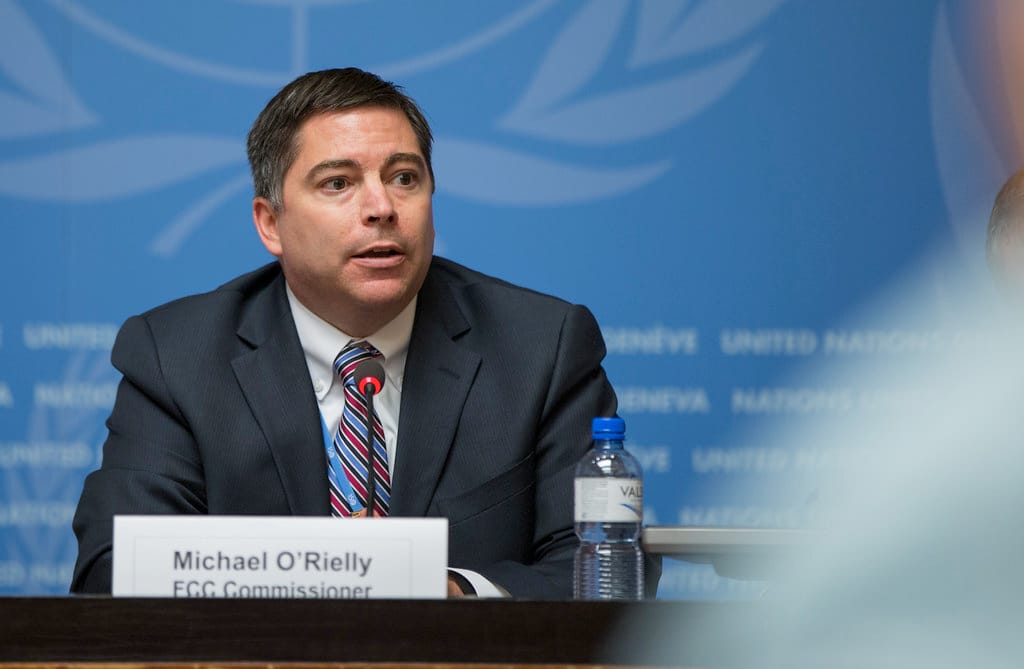FCC Multilingual Emergency Alerts, More Funding Sought for ‘Rip and Replace,” Healthcare and ACP
Another new proposed regulation from the FCC is aimed at tweaking the Wireless Emergency Alerts system.
Tim Su

February 14, 2023 – Federal Communication Commission Chairwoman Jessica Rosenworcel on Monday sent letters to the nine largest providers of Wireless Emergency Alerts to explore the possibility of adding languages besides English and Spanish.
Begun in 2012, the alert program has been used more than 70,000 times to warn the general public about extreme situations such as natural disasters, missing persons, and other critical events, according to the agency.
Rosenworcel expressed concern that those do not speak English risk become victims during public safety emergencies.
“Language should not be a barrier to getting critical information that could save lives,” Rosenworcel said in a press release.
Within the past year, the FCC had toughened the requirements associated with wireless alerts. The commission proposed bolstering the operational readiness and security of both the Emergency Alert System and Wireless Emergency Alerts, in an October proposal.
In August, the commission entered into a partnership with state and local governments to assess the geographic accuracy of emergency alerts. And in April, the agency proposed requiring wireless providers to publicly report on the reliability, speed, and accuracy of messages.
Not enough funding is available for rural providers swapping out Chinese equipment
The attention focused on the Chinese balloon shot down by the United States should prompt Americans to be even more cautious about its telecommunications networks, argued former Federal Communications Commissioner Michael O’Rielly in an article in DC Journal.
But O’Rielly also expressed concern that Congress had not properly funded small and mid-size wireless providers to implement the country’s “Rip and Replace” program.
Formally known as Secure and Trusted Communications Networks Reimbursement Program passed by Congress in 2019, the program funds broadband providers to change out equipment manufactured by Chinese-based companies.
But Congress hasn’t been keeping its promise, he said: The body has “appropriated less than 40 percent of the overall expected costs, ignoring more than $3 billion in legitimate and verified provider expenses.”
“Those concerns over the balloon are nearly identical to those that led Congress to identify the threat of Chinese-supplied wireless network equipment in the past,” O’Rielly said in the article. Yet “small providers who work to expand internet access in rural America are paralyzed. Most of those carriers do not have the financial ability to self-fund the rip-and-replace project. And while they wait for the funding, they can’t upgrade the service of their networks.”
The Competitive Carriers Association last month pressed the FCC on the need for more funding. And, in a January report to Congress, the FCC said that nearly half of respondents required to submit status reports on their efforts to remove unsecure equipment from their networks complained about a lack of funding, and about supply chain concerns.
Health provider partners with ISP to advance Affordable Connectivity Program
Health care provider Equiva Health is seeking to enter the communications marketplace in partnership with wireless internet service provider Infiniti Mobil to launch a new program focused on low-income customers.
The health company is working to create a framework for hospitals, nursing homes, insurers and other healthcare organizations to advance enrollment in the FCC’s Affordable Connectivity Program.
“Our goal is to bridge gaps in the digital divide and to improve outcomes by helping individuals manage their health more effectively,” said Equiva CEO Nir Altman.
FCC data shows 15.4 million households had subscribed as of January 2023, and less than 15% of eligible Medicaid patients had enrolled, even though 48 million households eligible for the ACP program.
“To truly tip the scales of health equity, digital health solutions must be readily accessible, extremely easy to use, and affordable — for patients, loved ones, clinicians, and healthcare organizations” Altman said.









Member discussion